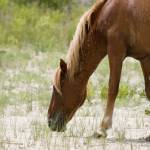Equine Laminitis Pain Scale Used by Veterinarians

Global use of the Obel scale to classify laminitis-induced lameness remains relevant in today’s equine veterinary culture, according to researchers at the Royal Veterinary College, Hertforshire, UK.
The Obel scale classifies lameness from I to IV, with I indicating mild soreness and IV designating extreme pain with reluctance to move. The scale provides a common method for veterinarians and horsemen to describe the severity of lameness regardless of the practitioner’s locale.
Researchers evaluated the repeatability and reproducibility of lameness determination using the Obel scale in a two-part study. The first part tested repeatability or intraobserver agreement through the use of 25 ponies. Each pony was graded twice by one experienced veterinarian, once during a hands-on clinical examination and then again during a video presentation of the initial clinical examination. The second part of the study tested reproducibility or interobserver agreement through the independent evaluation of 13 ponies by 58 experienced veterinarians.
Interobserver agreement was high, indicating the group of veterinarians often found the same degree of lameness among the ponies. At first, intraobserver agreement was moderate, but improved to substantial once the horses were grouped and recategorized as either sound, mildly lame (grade I or II), or severely lame (grade III or IV).
The full article, titled “Repeatability and reproducibility of the Obel grading system for equine laminitis,” was published in the July 2010 issue of the Veterinary Record.








